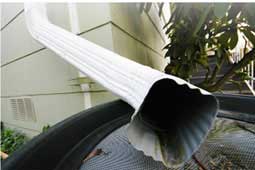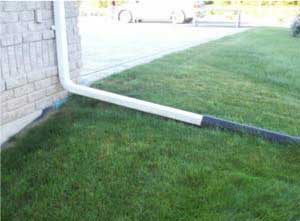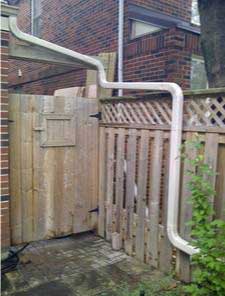
Mandatory Downspout Disconnect Due Dates for the City of Toronto
What is the Downspout Disconnection By-Law in Toronto?
As most Toronto residents know (or have heard about by now) a by-law has been passed requiring homeowners to remove their downspouts from discharging into city storm drains in order to alleviate problems caused during periods of heavy rain. The sewer system is overwhelmed during a heavy downpour, causing water treatment facilities to become overloaded and dump raw sewage into rivers and lakes.
The deadline for compliance in the downtown area was November 20, 2011
Steeles Avenue down to Eglinton Avenue
This area of the city has experienced problems in dealing with roof water runoff being added to the storm sewer system, especially during heavy rainstorms. Excessive water volume can cause storm drains and sewers to back up, allowing water and moisture to enter your basement. The experts at Eavestroughing Toronto can disconnect your downspouts from the sewer system and redirect the flow, protecting your property and providing you with peace of mind. Contact us today to schedule a free estimate and personal consultation at your home or business.
When is the deadline for disconnection of the downspouts? The deadline for this area was December 3, 2013.

All Other Toronto Areas
All other areas remaining in Toronto need to be disconnected by December 3, 2016. Consultants for the Mandatory Downspout Disconnection Program for the City of Toronto can be reached at 416-816-8470 to answer any questions you may have.
What Should You Know about the Downspout Disconnection Program?
1. Removal of every downspout from the drain is not required, according to the City of Toronto.
2. Proper grading of the property is required, so that the water drains away from your home and does not flow toward the neighbour's and cause a problem for them. Eavestroughing Toronto can professionally determine the best location for the downspout to be placed after it has been disconnected.
3. Locate the downspouts away from walkways and driveways so that dangerous ice does not form in areas of traffic.
4. Sometimes changing the location of the downspout is required if it is not safe to have it drain onto the ground where it is currently situated. This can sometimes require extensive re-grading or replacement of the eavestroughing, depending on age of the system.

5. Eavestroughing Toronto can assess the best position for the downspout and whether a location is feasible. Sometimes a re-sloping, realignment or re-grading of the eavestroughing system is required in order to ensure that the water flows to the new location of the downspout. Perhaps a downspout can be eliminated if it is in a poor location; however, replacement of eavestroughs may sometimes be necessary.
6. The homeowner, along with a knowledgeable contractor, must determine which downpipes can be safely disconnected. If there seems to be no solution, then the homeowner must apply for an exemption.
7. Incorporating a rain barrel into your eavestroughing system will allow you to harvest some of that water for use at a later time. When installing a barrel you will need to add a Y diverter so that the barrel can be removed in the winter and so that water can be redirected when the barrel is full. Rain barrels fill very quickly, so you should not depend on them to contain all the water from a downpipe.
8. Poor grading around your home can be remedied by filling in sunken areas with clay. This will help to move the water away properly. You are expected to do this if it means that the downpipe can be disconnected properly.

9. If unsure of the grading/slope of your ground around your home you can test an area before disconnecting your pipe. Simply turn your garden hose on and let it run for a while in the area where you plan to put your new downspout. Within a half hour of running the hose you will see where the water is going to go and can then make decisions based on this information.
10. Built-up flower beds around homes are usually not good areas for water to drain, especially if there are retaining walls in place. The walls often hold the water too close to the home, which can cause damage to the walls.
